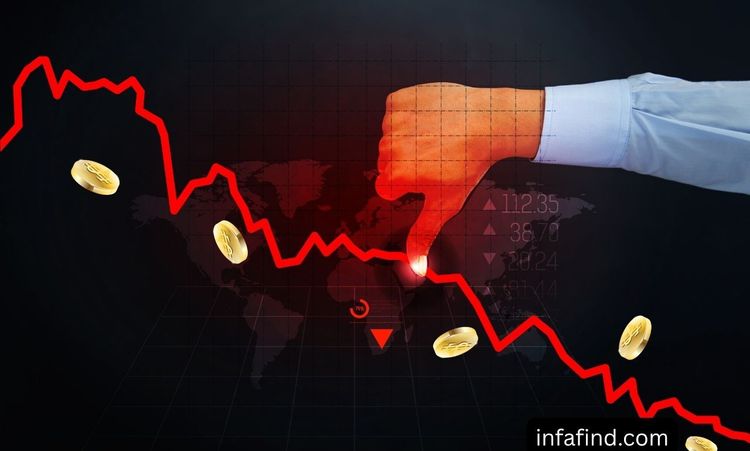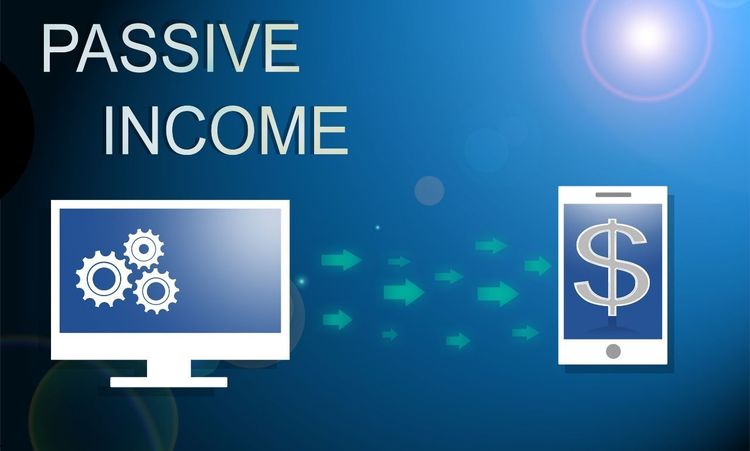We hate losing money more than we enjoy gaining it. This simple truth shapes our financial decisions in profound ways. Think about how you react when your investment drops $500 versus when it gains $500. The emotional impact differs significantly. Loss aversion explains why we often make counterproductive money choices. People routinely hold onto losing stocks too long and sell winners too early. They stick with bad financial products instead of switching to better ones. Understanding this psychological quirk can transform your relationship with money. This article explores how loss aversion works and offers practical ways to overcome it. Let's dig into this fascinating aspect of behavioral economics that might be sabotaging your financial future.
What is Loss Aversion?
Loss aversion refers to our tendency to prefer avoiding losses over acquiring equivalent gains. Economists Daniel Kahneman and Amos Tversky first identified this pattern in the 1970s. Their research showed that the pain of losing $100 feels roughly twice as intense as the pleasure of gaining $100. The phenomenon affects nearly everyone regardless of financial knowledge or experience. You might notice it when you hesitate to sell an investment that's dropped in value. Or perhaps you've kept a subscription service you barely use just to avoid "wasting" money. Loss aversion isn't entirely irrational. Our ancestors needed strong protective instincts to survive in dangerous environments. But in modern financial landscapes, this protective instinct often backfires. It causes us to make decisions based on emotional reactions rather than logical analysis. The concept helps explain numerous puzzling financial behaviors that seem to contradict traditional economic theories.
How Does Loss Aversion Work?
Loss aversion operates within our brains at both conscious and unconscious levels. Brain imaging studies reveal increased activity in regions associated with emotional pain when people face losses. Financial losses trigger similar neural pathways as physical pain. This reaction happens automatically before our rational mind can intervene. Consider how we respond differently to identical financial situations depending on their framing. If your bank advertises "avoid a $5 fee" rather than "get a $5 bonus," you'll likely respond more strongly. The first statement frames the situation as preventing a loss. Marketers understand this principle well and frequently employ loss-framed messaging in their campaigns. "Limited time offer" and "don't miss out" tap directly into our fear of loss. Insurance companies build their entire business model around our desire to avoid potential losses. People willingly pay premiums far exceeding the statistical value of potential damages. Loss aversion also explains why free trial periods work so effectively. Once we possess something, giving it up feels like a loss, even if we never paid for it.
Neural Basis of Loss Aversion
The neural basis of loss aversion involves specific brain regions that process emotions and decision-making. When facing potential losses, the amygdala and anterior insula become especially active. These areas manage threat detection and negative emotions in our brains. Researchers at University College London conducted experiments tracking neural responses during financial decisions. They discovered that loss-related brain activity significantly outweighed gain-related activity. This biological wiring helps explain why we can't simply "think our way out" of loss aversion. Interestingly, individual differences in loss aversion correlate with varying levels of neural activity. People with stronger emotional responses to losses typically display more conservative financial behaviors. Our neurological makeup essentially predisposes us to certain financial tendencies. Stress can further amplify these responses, making rational decisions even harder during market downturns. Understanding these biological mechanisms helps us develop more effective strategies for overcoming loss aversion bias.
What are the Characteristics of Loss Aversion Theory?
Asymmetric Value Function
The asymmetric value function forms the core characteristic of loss aversion theory. This mathematical representation shows how we value gains and losses differently. The curve appears steeper for losses than for equivalent gains on a graph. You feel worse losing $50 than you feel good finding $50 on the street. Financial advisors often struggle against this asymmetry when counseling clients during market volatility. Many investors panic-sell during downturns despite knowing markets historically recover. The asymmetry extends beyond money to time investments and emotional commitments as well. We hate wasting time on a bad movie we've started more than we enjoy discovering a great one. The effect even applies to hypothetical scenarios and potential future outcomes. Simply imagining potential losses causes stronger emotional reactions than imagining equivalent gains. This asymmetry explains why scare tactics often prove more effective than positive messaging in marketing campaigns.
Endowment Effect
The endowment effect describes our tendency to value things more highly simply because we own them. Once something belongs to us, giving it up feels like a loss. This characteristic closely connects to loss aversion in personal finance contexts. Homeowners frequently overvalue their properties based on emotional attachment rather than market realities. Stock investors develop similar attachments to shares they've held for years. People often demand substantially more money to sell an item than they would pay to acquire it. Jack Knetsch demonstrated this through a famous experiment with coffee mugs and chocolate bars. Students randomly received either item, then had opportunities to trade. Very few trades occurred despite the random initial distribution. Each group overwhelmingly preferred keeping what they already possessed. The endowment effect explains why people struggle to downsize possessions even when financially beneficial. It also influences how we maintain financial accounts, insurance policies, and subscription services.
Sunk Cost Fallacy
The sunk cost fallacy represents another key characteristic directly stemming from loss aversion. We continue investing in poor decisions because we've already committed resources. This fallacy appears when you keep adding money to a failing business venture. You justify continued investment by focusing on what you've already spent. People maintain expensive hobbies they no longer enjoy because they've already purchased equipment. Investors average down on losing positions instead of reconsidering their initial thesis. The sunk cost fallacy explains why breaking bad financial habits proves so difficult. We hate admitting mistakes because doing so forces us to confront losses. Business organizations suffer from this bias when continuing failed projects rather than cutting losses. Warren Buffett advises investors to ignore sunk costs and evaluate investments based solely on future prospects. Recognizing when you're falling prey to this fallacy can prevent substantial financial damage.
What is the Risk of Loss Aversion Bias?
Missed Investment Opportunities
Loss aversion creates significant risks by causing us to miss valuable investment opportunities. Fear of potential short-term losses often prevents people from investing altogether. Many Americans keep excessive cash in low-yield savings accounts despite inflation eroding its value. Young workers frequently choose overly conservative retirement allocations despite their long time horizons. Historical data shows that market timing driven by loss aversion typically reduces returns. The average equity investor underperforms market indices largely due to emotional decision-making. People routinely wait for "the perfect time" to invest, which rarely arrives. They sell during market downturns, missing the powerful recovery days that follow. These missed opportunities compound over decades, creating enormous opportunity costs. A 2018 Fidelity study found that many Americans missed approximately $270,000 in potential retirement savings. Loss aversion particularly impacts entrepreneurial decisions and business investments. Potentially lucrative opportunities get rejected because potential losses loom larger than equivalent gains. This bias ultimately represents one of the biggest threats to long-term financial security.
Portfolio Underperformance
Portfolio underperformance often results directly from loss aversion bias affecting investment decisions. Investors frequently construct portfolios that feel emotionally safe rather than mathematically optimal. They overweight bonds and cash despite needing growth for retirement goals. Home country bias—overinvesting in domestic markets—stems partly from loss aversion to foreign investments. Many people hold concentrated positions in company stock despite the clear diversification benefits. The disposition effect—selling winners too soon while holding losers too long—drags down returns. You might lock in small gains prematurely while hoping underwater investments will "come back." Loss aversion drives performance-chasing behavior, buying high and selling low. Institutional investors suffer from these same biases despite their professional training. Even professional fund managers exhibit reluctance to realize losses in their portfolios. This behavior creates tax inefficiencies alongside poor investment outcomes. Modern portfolio theory suggests diversification across uncorrelated assets for optimal risk-adjusted returns. Yet loss aversion frequently prevents investors from maintaining properly diversified allocations. The resulting underperformance can severely impact long-term financial goals and retirement readiness.
Excessive Insurance Purchases
Excessive insurance purchases represent another risk stemming directly from loss aversion bias. People routinely over-insure against unlikely events while under-insuring against common risks. Extended warranties on consumer electronics typically provide poor value yet sell successfully. We overpay for comprehensive coverage on aging vehicles where basic liability would suffice. Insurance companies deliberately frame their marketing around loss aversion principles. They highlight worst-case scenarios that trigger strong emotional responses in consumers. The peace of mind from insurance feels worth almost any price when contemplating potential losses. Many households carry multiple overlapping policies with redundant coverage areas. Low-deductible plans cost substantially more but appeal to our desire to avoid small losses. These excessive insurance costs create significant drags on financial progress over time. The money spent on unnecessary coverage could instead fund investment accounts or emergency funds. A balanced insurance approach requires recognizing where loss aversion influences your decisions. Focus protection on truly catastrophic risks rather than minor inconveniences. Self-insuring smaller potential losses through emergency savings often makes more financial sense. True financial security comes from rational insurance planning rather than emotional reactions.
How to Overcome Loss Aversion
Reframe Financial Decisions
Reframing financial decisions offers a powerful strategy for overcoming loss aversion. Train yourself to view market downturns as buying opportunities rather than losing situations. Consider regular investing as "purchasing future income" instead of "setting money aside." Track your progress toward specific goals rather than focusing on account balances. Redefine "losing money" as permanent loss rather than temporary market fluctuations. Use percentage changes instead of dollar amounts when evaluating investment performance. This psychological shift helps maintain perspective during volatile market periods. Try viewing financial choices through someone else's eyes for greater objectivity. Imagine advising a friend facing your exact financial situation. The emotional distance often reveals more rational courses of action. Develop decision-making frameworks that emphasize long-term outcomes over short-term emotions. Write investment policy statements detailing how you'll respond to various market scenarios. Remind yourself that avoiding temporary discomfort often creates permanent disadvantages. Reframing helps align your financial behaviors with your actual long-term interests.
Automate Investment Processes
Automating investment processes effectively bypasses loss aversion by removing emotional decision points. Set up automatic transfers from checking accounts directly to investment accounts. Implement dollar-cost averaging strategies that invest predetermined amounts on regular schedules. Use target-date or balanced funds that automatically maintain appropriate asset allocations. Automation prevents you from second-guessing your investment strategy during market volatility. The money moves before you experience the emotional urge to hold back. Consider using robo-advisors that make algorithm-based decisions without emotional interference. These services maintain disciplined investment approaches regardless of market conditions. Pre-commit to specific investment behaviors through written plans and automatic systems. Establish clear decision rules for portfolio rebalancing to maintain target allocations. Tax-loss harvesting can be automated to systematically capture loss benefits for tax purposes. Automation works because it addresses the behavioral aspect rather than the logical aspect. The loss aversion bias operates most strongly at decision points involving active choices. By removing these friction points, you effectively neutralize the bias's impact on your finances. The most successful long-term investors typically employ some form of automation in their approach.
Focus on Long-Term Goals
Focusing on long-term goals provides critical context that helps overcome loss aversion bias. Short-term market movements matter far less within a decades-long investment timeframe. Regularly remind yourself of your actual financial objectives rather than day-to-day performance. Maintain visual representations of your goals to reinforce their importance during market volatility. Create specific mental accounts aligned with different time horizons and purposes. Retirement funds require different emotional responses than emergency savings or house down payments. Historical market data demonstrates that temporary losses eventually reverse for disciplined investors. Use this perspective to maintain composure during inevitable market downturns. Develop personal investment mantras that reinforce your long-term perspective during stressful periods. Physical distance from financial news and constant portfolio checking often improves decision quality. Consider implementing a mandatory waiting period before making any reactive investment changes. This cooling-off period allows initial emotional responses to subside before taking action. Working with a financial advisor can provide valuable objective perspectives during emotional markets. The advisor serves partly as a behavioral coach preventing harmful impulsive decisions. This long-term focus ultimately transforms loss aversion from a liability into a potential asset. By channeling your natural loss aversion toward avoiding permanent goal impairment rather than temporary discomfort, you harness its protective power appropriately.
Conclusion
Loss aversion profoundly shapes our financial lives in ways we rarely recognize. This cognitive bias makes us feel losses more intensely than equivalent gains. The pain of losing $500 genuinely hurts more than the pleasure of gaining $500 satisfies. Successful financial management requires acknowledging this psychological reality rather than denying it. By understanding how loss aversion works, you can implement strategies to counteract its negative effects. Reframe financial decisions to focus on opportunities rather than potential losses. Automate your investment processes to bypass emotional decision points entirely. Keep your attention firmly fixed on long-term goals instead of short-term market movements. These approaches won't eliminate loss aversion—it's hardwired into our brains. But they create systems that prevent this bias from derailing your financial progress. The most successful investors don't lack emotions; they simply build structures that limit emotional interference. Financial education alone rarely solves behavioral challenges without accompanying practical systems. Take an honest inventory of where loss aversion might currently impact your financial decisions. The awareness you develop today could transform your financial trajectory for decades to come.




